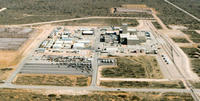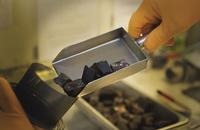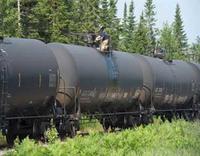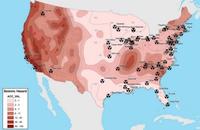-
The next Bay Area’s Big One may be a cluster of major quakes
A cluster of closely timed earthquakes over 100 years in the seventeenth and eighteenth centuries released as much accumulated stress on San Francisco Bay Area’s major faults as the Great 1906 San Francisco earthquake, suggesting two possible scenarios for the next “Big One” for the region, according to new research. “The plates are moving,” the study’s co-author said. “The stress is re-accumulating, and all of these faults have to catch up. How are they going to catch up?”
-
-
NIST seeking comments on revisions to ICS security guide
The National Institute of Standards and Technology (NIST) has issued for public review and comment a proposed major update to its Guide to Industrial Control Systems (ICS) Security. The NIST guide, downloaded more than 2.5 million times since its initial release in 2006, advises on how to reduce the vulnerability of computer-controlled industrial systems used by industrial plants, public utilities and other major infrastructure operations to malicious attacks, equipment failures, errors, inadequate malware protection and other software-related threats.
-
-
Critics say $265 billion transportation bill insufficient
Transportation advocates criticize the lack of an increase in funding in the Senate’s $265 billion surface transportation bill recently unveiled. Senate leaders said the bill would replace the current transportation funding measure and maintain current funding levels, adjusted for inflation, for the next six years. The proposed bill includes $44 billion annually for road and transit projects, based on a Congressional Budget Office(CBO) estimate of how much funding will be needed to maintain current federal transit programs. The CBC has projected that Department of Transportation’s Highway Trust Fund will run out of money by August 2014 without congressional action.
-
-
Pumping Central Valley’s ground water increases number of California’s earthquakes
Scientists have offered a new theory explaining the steady increase in the number of small earthquakes in parts of Central California. They say that the quakes are partly due to the pumping of groundwater. Groundwater is heavy, and depresses the Earth’s upper crust like a weight. Without that weight, the earth springs upward and the change in pressure can trigger more small earthquakes.
-
-
New Mexico demands clarifications, reassurances on WIPP radiation leaks

New Mexico’s environment secretary Ryan Flynn has ordered the Department of Energy (DOE) to explain how it will protect public health and the environment while it investigates a radiation leak at the underground Waste Isolation Pilot Plant (WIPP). The plant has not been in compliance with various permit requirements since the February underground fire and radiation leak, which eventually led to a plant shutdown.
-
-
Problems continue to plague the Oxide Conversion Facility at Y-12

Oxide conversion is critical to recycling weapons-grade uranium, making it useful in nuclear warheads or for other purposes. The Oxide Conversion Facility (OCF) at the Y-12National Security Complex has been operating inconsistently in recent years. A report by the staff of the Defense Nuclear Facilities Safety Board(DNFSB) said there was a plan to resume operations the week of 7 April 2014, but that did not happen.
-
-
Abundant shale gas, by itself, not likely to alter climate projections
While natural gas can reduce greenhouse emissions when it is substituted for higher-emission energy sources, abundant shale gas is not likely substantially to alter total emissions without policies targeted at greenhouse gas reduction, a new study finds. If natural gas is abundant and less expensive, it will encourage greater natural gas consumption and less of fuels such as coal, renewables and nuclear power. The net effect on the climate will depend on whether the greenhouse emissions from natural gas — including carbon dioxide and methane — are lower or higher than emissions avoided by reducing the use of those other energy sources.
-
-
Absorbent used in kitty litter may be cause of radiation leaks in U.S. nuke dump
A wheat-based absorbent often used in kitty litter may be the likely cause of the radiation leak that led to the closure of the Waste Isolation Pilot Plant(WIPP), the U.S. only underground nuclear waste repository, according to Jim Conca, a former geochemist at Los Alamos National Laboratory(LANL). Conca noted that EnergySolutions, a Salt Lake City-based company hired to package radioactive waste at LANL into containers for shipment to the WIPP, switched from using a clay-based absorbent in the storage drums to a wheat-based mixture.
-
-
U.S. to require railroads to notify states when oil is shipped

With the increase in available oil from fracking and larger pipeline capacity, railways are moving more and more oil. Rail companies moved 400,000 oil carloads in 2013, dwarfing 2005’s 6,000 oil carloads. The increase in oil shipments of oil has led to an increase in the number of accidents involving oil tankers. In the wake of recent accidents, the U.S. Department of Transportation (DOT) has released an emergency order to railroad companies which is designed to reduce the risk when shipping crude oil across the nation.
-
-
Lawmakers want safer waste storage at nuclear plants
Lawmakers on Tuesday introduced a set of bills aimed at improving the safety and security of nuclear power plants’ waste in the event of a natural disaster or terrorism. One of the bills would require nuclear power plant operators to accelerate the transfer of nuclear waste stored in spent fuel pools into dry cask storage units. Current Nuclear Regulatory Commission(NRC) regulations allow spent fuel to remain in spent fuel pools until the reactor completes decommissioning, which can take as long as sixty years. Another bill would stop the NRC from issuing exemptions to its emergency response and security requirements for reactors that have been permanently decommissioned.
-
-
Leaders of Chinese city delay alerting residents to deadly radiation risk
Authorities in the East China city of Nanjing delayed,for thirty-six hours, notifying residents about the loss of deadly isotope iridium-192 pellets at a local industrial plant. The pellets disappeared on Wednesday, and plant officials informed government authorities on Thursday – but did not inform city residents until Saturday. The extremely toxic pellets, the size of beans, were found the following Saturday in an open field one kilometer from the plant. The plant management detained four employees at the plant on Sunday for violating radioactive work regulations and storage rules, and they are likely to face criminal charges.The plant is using the isotope to find flaws in metal components.
-
-
Limiting methane emissions would more quickly affect climate than limiting CO2
When discussing climate change, scientists point to “radiative forcing,” a measure of trapped heat in Earth’s atmosphere from man-made greenhouse gases. The current role of methane looms large, they say, contributing over 40 percent of current radiative forcing from all greenhouse gases. The role of methane as a driver of global warming is even more critical than this 40 percent value might indicate, they note, since the climate system responds much more quickly to reducing methane than to reducing carbon dioxide. The implication is that while it is true that in order to slow, or even reverse, global warming we must limit emissions of both carbon dioxide and methane, it makes more sense to concentrate now on limiting methane emissions because reducing methane emissions would buy society some critical decades of lower temperatures.
-
-
Coral reefs offer valuable protection for coastal infrastructure
Growing natural hazards from coastal storms, flooding, and rising sea levels are leading to major investments worldwide in coastal defense structures such as seawalls and breakwaters. A new study shows that coral reefs can provide risk reduction benefits comparable to artificial defenses, and reef restoration and enhancement is a cost-effective alternative to manmade structures. Restoring coral reefs as a way to protect coastal infrastructure is also cheaper: the typical price for a tropical breakwater project is $197 million, compared with $129 million for restoring a reef.
-
-
Cybersecurity bill not likely before a crisis proves its necessity
A recent simulation, with 350 participants from congressional staffs, the cybersecurity sector, and the U.S. military, examined whether or not Congress was capable of passing a comprehensive cybersecurity legislation to protect the country’s critical infrastructure from debilitating cyberattacks. The simulation participants concluded that Congress is not likely to act unless there is a major cyber crisis, and that until such crisis occurs, smaller measures, such as the president’s voluntary cybersecurity framework, are the best that can be hoped for.
-
-
24 U.S. nuclear plants vulnerable to earthquakes

The U.S Nuclear Regulatory Commission (NRC) has concluded that the designs of twenty-four U.S. nuclear plants do not meet contemporary standards to withstand an earthquake in the vicinity of the facility. This analysis has revealed that these facilities could face significant, even disastrous, damage from earthquakes which are larger than what they were designed to encounter.
-
More headlines
The long view
Water Wars: A Historic Agreement Between Mexico and US Is Ramping Up Border Tension
As climate change drives rising temperatures and changes in rainfall, Mexico and the US are in the middle of a conflict over water, putting an additional strain on their relationship. Partly due to constant droughts, Mexico has struggled to maintain its water deliveries for much of the last 25 years, deliveries to which it is obligated by a 1944 water-sharing agreement between the two countries.
Trump Is Fast-Tracking New Coal Mines — Even When They Don’t Make Economic Sense
In Appalachian Tennessee, mines shut down and couldn’t pay their debts. Now a new one is opening under the guise of an “energy emergency.”
Smaller Nuclear Reactors Spark Renewed Interest in a Once-Shunned Energy Source
In the past two years, half the states have taken action to promote nuclear power, from creating nuclear task forces to integrating nuclear into long-term energy plans.
Keeping the Lights on with Nuclear Waste: Radiochemistry Transforms Nuclear Waste into Strategic Materials
How UNLV radiochemistry is pioneering the future of energy in the Southwest by salvaging strategic materials from nuclear dumps –and making it safe.
Model Predicts Long-Term Effects of Nuclear Waste on Underground Disposal Systems
The simulations matched results from an underground lab experiment in Switzerland, suggesting modeling could be used to validate the safety of nuclear disposal sites.
